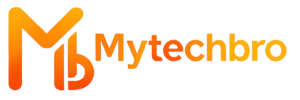Introduction to the MERN Stack
The MERN stack is a powerful and popular technology stack used for modern web development. It is composed of four key technologies: MongoDB, Express.js, React, and Node.js. Each component plays a crucial role in building efficient and scalable web applications. MongoDB serves as the database management system, allowing for the storage and retrieval of data in a flexible, document-oriented format. Its ability to handle large volumes of unstructured data makes it a suitable choice for many applications.
Express.js is a web application framework for Node.js, designed to simplify the development of server-side applications. By providing robust features for building web and mobile applications, it streamlines the process of routing and handling HTTP requests. React, a JavaScript library maintained by Facebook, is responsible for building user interfaces. Its component-based architecture allows developers to create reusable UI components, enabling the efficient construction of interactive and dynamic web pages.
Node.js, the final piece of the puzzle, is a runtime environment that allows JavaScript to be executed on the server side. This enables the use of a single programming language throughout the entire application, from the front end to the back end, fostering better collaboration among developers. The integration of these four technologies in the MERN stack promotes a seamless development workflow, reducing the complexity of building applications.
The MERN stack has gained immense popularity in recent years due to its ability to create full-stack applications with high performance and scalability. It offers several advantages over traditional stacks, such as the simplicity of using JavaScript on both the client and server sides, along with the support of a large community of developers. As a result, the MERN stack has become a preferred choice among web developers seeking to create innovative and efficient applications for today’s digital landscape.
Setting Up a MERN Stack Development Environment
To initiate development with the MERN stack, which comprises MongoDB, Express.js, React.js, and Node.js, one must first establish a suitable development environment. This process primarily involves installing essential software and configuring the project structure to facilitate efficient development.
The first step is to download and install Node.js, which provides the runtime environment necessary for executing JavaScript server-side. Node.js comes packaged with npm (Node Package Manager), which is crucial for managing the dependencies of your MERN stack applications. To ensure that you are using the latest version, visit the official Node.js website and follow the installation instructions for your specific operating system.
Next, you will need to install MongoDB, the database component of the MERN stack. MongoDB stores your application’s data in a flexible JSON-like format, allowing for quick and efficient data processing. Installation can be performed through either the MongoDB Community Server or using a cloud-based solution like MongoDB Atlas, which simplifies setup and scaling for development.
After installing Node.js and MongoDB, it is advisable to select an appropriate code editor. Popular choices include Visual Studio Code, Sublime Text, and Atom. These editors support various extensions and plugins that enhance productivity, such as syntax highlighting, code linting, and version control integration. Setting up an efficient editor can significantly affect development speed and code quality.
Once the necessary software is installed, it is essential to create a basic project structure. Consider establishing separate directories for the frontend and backend. For example, inside your main project folder, you may create a folder named client for the React application and server for the Node.js and Express backend. This separation helps maintain organization throughout the development process.
Finally, configuring settings and initializing a version control system, such as Git, will provide tracking and collaboration capabilities as your project evolves. By following these steps, one can efficiently set up a MERN stack development environment, allowing for a smooth start to building modern web applications.
Core Features of the MERN Stack
The MERN stack, consisting of MongoDB, Express.js, React, and Node.js, is well-regarded for its robust features that empower modern web development. One of the most significant advantages of the MERN stack is its use of JavaScript across the entire development pipeline. This uniformity allows developers to use the same language on both the client and server sides, streamlining the development process. Consequently, this leads to fewer context switches for developers and a more cohesive codebase, ultimately enhancing productivity and efficiency.
Another essential element of the MERN stack is MongoDB, a NoSQL database that boasts flexibility and scalability. Unlike traditional relational databases, MongoDB stores data in JSON-like documents, allowing for rapid iteration and the ability to handle unstructured data. This structure aligns seamlessly with how data is represented in web applications, making it easier to manage complex data relationships. For instance, developers can quickly adapt their schema as applications evolve without the constraints of predefined tables, facilitating agile development practices.
Express.js further elevates the capabilities of the MERN stack by serving as a powerful backend framework. Express simplifies the creation of server-side applications and handling HTTP requests. It provides a range of middleware options that can be easily integrated to extend functionality, such as parsing JSON or managing sessions. This streamlined approach allows developers to focus more on application logic instead of repetitive code, thus accelerating development timelines.
The final pillar of the MERN stack, React, enhances the user experience by enabling the creation of dynamic and responsive user interfaces. With its component-based architecture, React allows developers to build reusable UI components, improving maintainability and consistency across applications. Its virtual DOM significantly boosts performance, ensuring smooth interactions for end-users. For example, a single-page application built with React can update content efficiently without necessitating full page reloads, creating a seamless browsing experience.
Overall, the MERN stack’s core features make it a powerful choice for web development, combining the strengths of JavaScript, the NoSQL advantages of MongoDB, the efficiency of Express.js, and the dynamic capabilities of React.
Best Practices and Common Pitfalls in MERN Development
When developing applications using the MERN stack, which comprises MongoDB, Express.js, React, and Node.js, employing best practices is essential to ensure maintainability, scalability, and performance. Proper code organization should be the first consideration, as it greatly influences the overall structure of the application. Developers should adopt a modular approach, creating well-defined components in React and organizing routes and middleware effectively in Express.js. This not only improves readability but also simplifies maintaining the codebase over time.
Effective state management in React is another pivotal practice. Utilizing tools such as Redux or Context API can help manage application state efficiently. These tools allow for a clearer data flow and help in avoiding issues that arise from prop drilling. Developers should also focus on performance optimization within React components, implementing techniques like memoization and lazy loading to further enhance responsiveness and reduce load times.
In terms of back-end development, implementing safety measures in Express.js is crucial. This includes validating user input, using environment variables to manage sensitive information, and applying middleware for authentication and authorization. Additionally, rate limiting and proper error handling can bolster security against various attack vectors.
Database optimization techniques in MongoDB are significant as well. Developers should implement indexing strategies to improve query performance and consider setting appropriate data types. Additionally, structuring data for relationships, whether through embedding or referencing, is vital for efficient data retrieval.
Despite these best practices, common pitfalls exist in MERN development. For instance, neglecting to manage dependencies properly can lead to compatibility issues. Similarly, developers frequently overlook the importance of thorough testing, which can result in bugs that diminish user experience. By being aware of these challenges and avoiding them, both novice and experienced developers can maximize the efficacy of the MERN stack.



